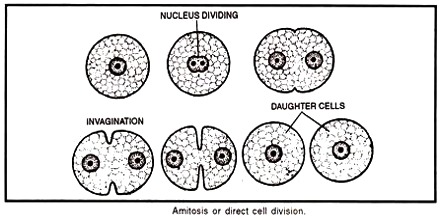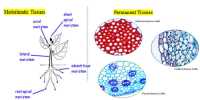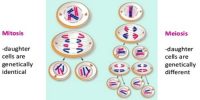Procedure of amitosis in Cell Division
The amitosis or direct cell division is the way of asexual reproduction in acellular organisms like bacteria and protozoans and also a system of multiplication or development in foetal membranes of a few vertebrates.
- In this method, somatic cell is division into two parts, each of which can develop into new entire organism. Amitosis in microbe occurs either horizontally (e.g. Paramecium) or vertically (e.g. Euglena). During amitosis the nucleus elongates first and then assumes dumbbell- shaped appearance.
- Amitosis occurs in mega-nucleus of paramecium, nuclei of internodal cells of Cham, endosperm cells of seeds, cartilage cells and unhealthy cells.

- In the denote time, the cell wall at the middle penetrates inwardly making a grove which steadily becomes narrow and eventually splits into two daughter cells.
- Later these two newly formed daughter cells grow to be of the size of their mother cells.
- In this types of cell division, disappearance of nuclear membrane and appearance of spindle apparatus do not occur.
Amitosis is a method of division in which nucleus elongates, constricts in the middle and divides directly into two daughter nuclei. This is followed by centripetal constriction of cytoplasm to form two daughter cells.










